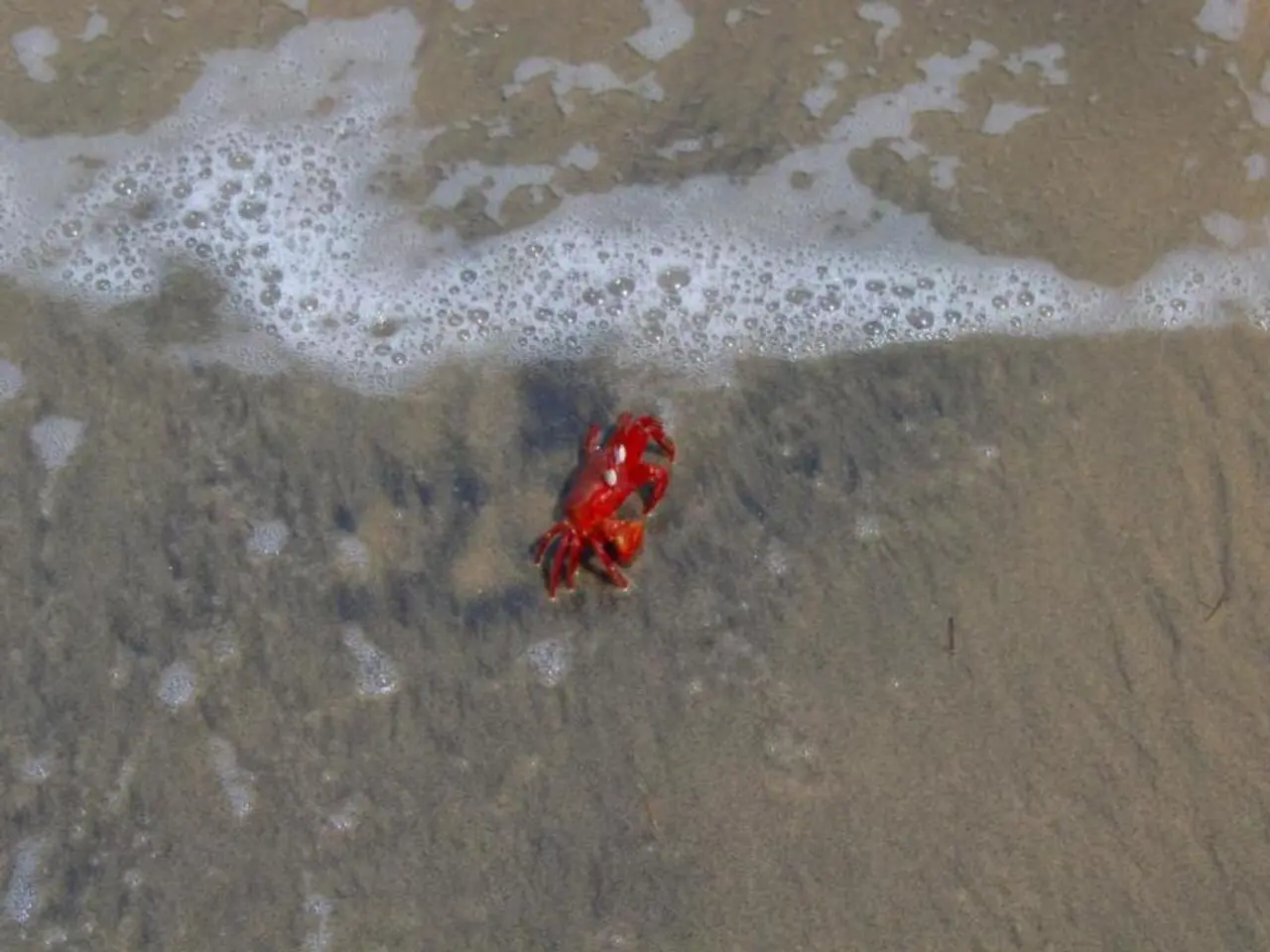Peculiar ocean currents underlie the perplexing mass strandings of red crabs
In a groundbreaking study published in the journal Limnology and Oceanography, scientists have uncovered a fascinating connection between atypical currents and the appearance of pelagic red crabs, also known as tuna crabs, along the West Coast of the United States.
The research, led by lead author Megan Cimino, was prompted by a pelagic red crab stranding in Monterey, California in 2018. The team, which includes coauthors from NOAA, UC Santa Cruz, UC Santa Barbara, Colorado State University, and the Centro de Investigación Cientifica y Educación Superior de Ensenada in Baja California, employed a regional ocean model of the California Current System for their study.
The study reveals that the appearance of red crabs outside of their normal range correlates with the amount of seawater flowing from Baja California to central California. This finding challenges the other major hypothesis—that warm water brought by marine heatwaves and El Niño events causes the appearances. Instead, the researchers found that strong currents are the key indicator for the presence of the crabs.
The scientists created a seawater flow index called the "southern source water index" (SSWI) to help detect abnormal current years. According to the study's authors, the SSWI shows how much water off the central California coast comes from south of the U.S.-Mexico border.
The SSWI could potentially serve as an early warning system about what the ocean state is that year and whether southern species are expected in northern regions. Rykaczewski suggests that the southern source water index could be used as a predictive tool for changes in coastal species composition.
Jacox emphasizes the importance of digging into the mechanisms of climate change rather than only considering 'warm temperature equals some response'. The movement of pelagic red crabs is an often-overlooked piece of the puzzle when it comes to understanding climate change. The study of red crabs and the creation of the southern source water index offers another tool for understanding climate change mechanisms.
Scientists are testing whether the southern source water index is sensitive to changes in ocean conditions due to climate change. The research team believes that changes in the contribution of waters from different locations in the broader North Pacific are important for understanding climate change.
The study was published in the journal Limnology and Oceanography in July 2021 with the DOI 10.1002/lno.11870. The search results do not provide information about the authors of the research article investigating the causes of the millions of red deep-sea crabs appearing on the West Coast of the United States, nor about the development of a seawater flow index related to this phenomenon.
The study provides an example of the practical applications of such studies in understanding climate change mechanisms. As we continue to grapple with the complexities of climate change, research like this offers valuable insights into the intricate relationships between our oceans, climate, and the creatures that inhabit them.
Read also:
- Peptide YY (PYY): Exploring its Role in Appetite Suppression, Intestinal Health, and Cognitive Links
- Toddler Health: Rotavirus Signs, Origins, and Potential Complications
- Digestive issues and heart discomfort: Root causes and associated health conditions
- House Infernos: Deadly Hazards Surpassing the Flames








